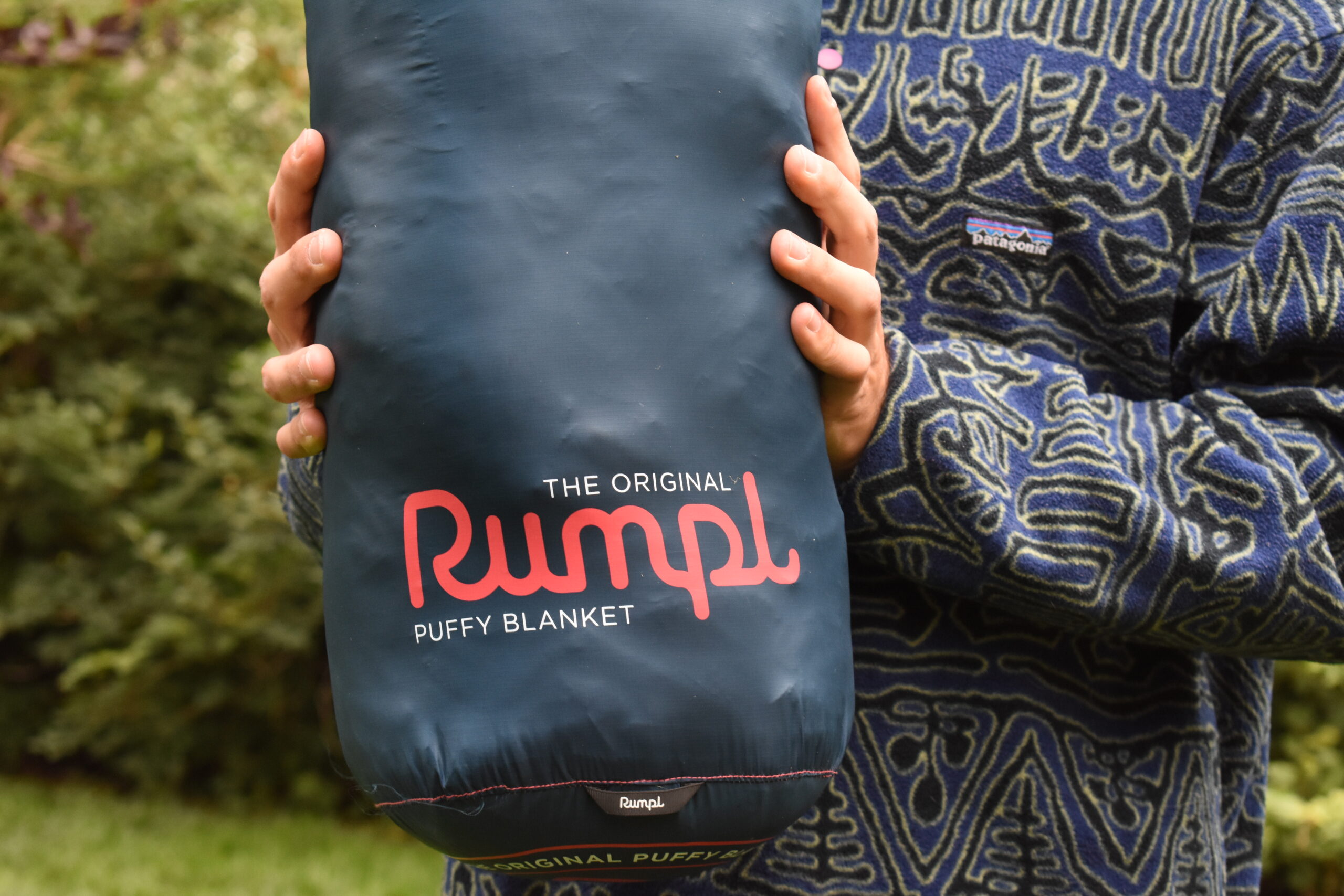
Intro
Most of our reviews are pretty long — and take a long time to produce — because we want to provide enough info for you to actually determine whether the gear we tested will work well for you.
But we get asked to check out an increasingly wide range of products, and sometimes, we just want to tell you about something we’ve been using and loving lately.
So that’s where this monthly series — Stuff We Like — comes in, where we keep you current on a broad range of stuff we’re currently digging.
And if there’s something you love that you think we ought to check out, drop us a note in the comment section below.
Namuk Daft Merino Bike T-shirt
MSRP: $79
Kristin Sinnott & Linden: (include size and how it fits him): My petite 4-year-old son is a big fan of his balance bike, Mac Ride, and Kids Ride Shotgun. He loves to bike regardless of who’s controlling the direction, so when I saw the Daft Merino Bike T-shirt, I thought it was right up his alley. My son and I have tested a few products from Namuk (see the Eon review) and everything we’ve tested has left us impressed.
My son is small for his age (he is blissfully unaware of this fact) at 30 lbs / 13.6 kg and 38 in / 96.5 cm. The size 2-3T fits him perfectly. It has an athletic fit and there’s enough length in the torso without being too long. The shirt is 65% merino wool and 35% polyester. The fabric is soft, slightly stretchy, and fairly quick-drying. It is also just a great looking shirt, and one that he has gotten a lot of wear out of already, on and off the bike.
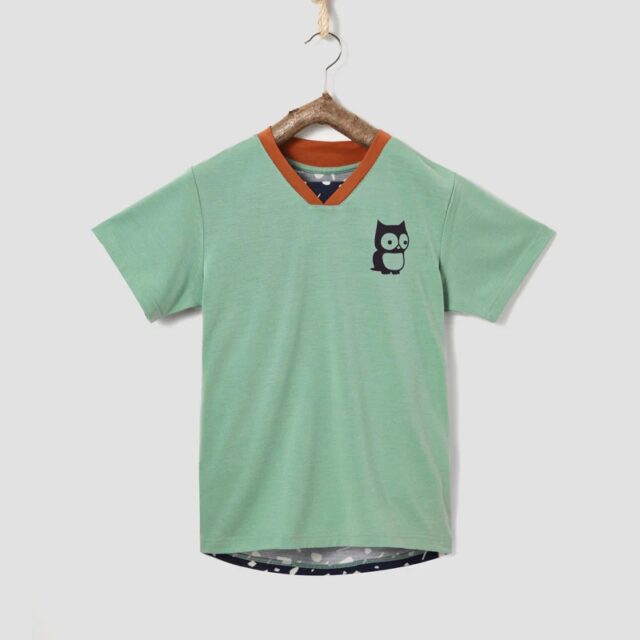
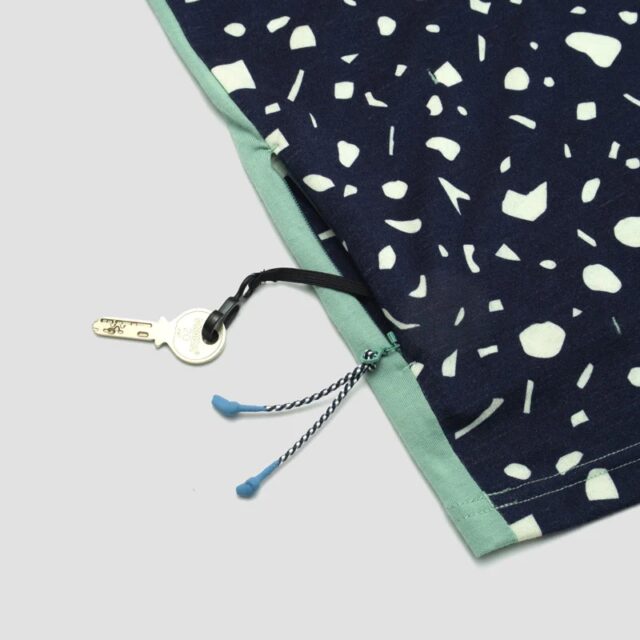
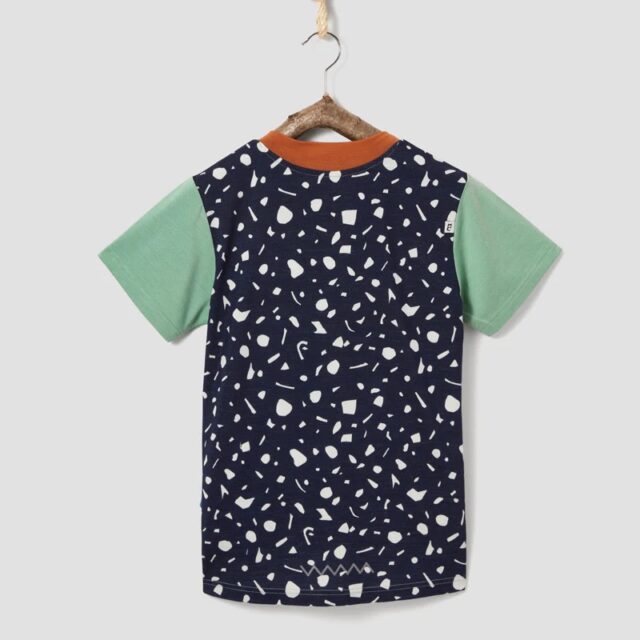
In my experience, Namuk has a tendency to take a product’s design and improve upon it. From their winter outwear to their backpacks to their Eon shirt, I’m always impressed by the brand’s attention to detail. For example, the Eon shirt has a hidden side zipper with a key ring and features reflective details.
The Eon T-shirt is one of my favorite shirts for my son so I really hope he doesn’t outgrow it anytime soon. If you have a kid that likes to adventure outside, check out the Daft Bike T-shirt. It’s a bit pricey, but in this case, you get what you pay for.
Rumpl Original Puffy Blanket (2-person)
MSRP: $199
Luke Lozano: You might be confused as to why I am recommending a puffy blanket during one of the hottest times of the year. While the Rumpl Original Puffy Blanket is the perfect thing to wrap you up during the winter months, it will also make your summer days and evenings comfier and flashier (check out all the cool designs).
The Rumpl has topped my list for “must-have summer items.” I’ve put it to the test, using it for both camping trips and summer evening picnics. I have even used my Rumpl to dry off after taking a dip in an alpine lake.
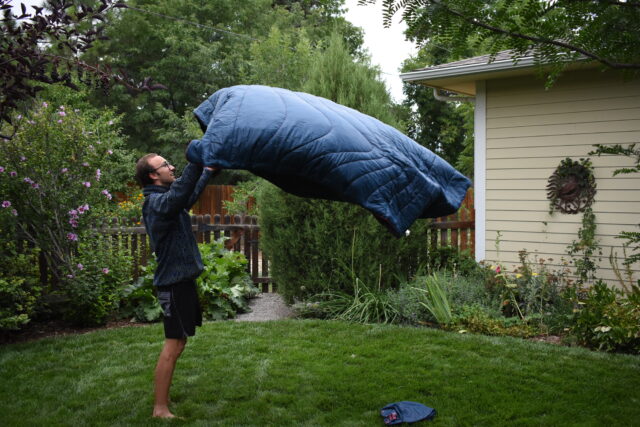
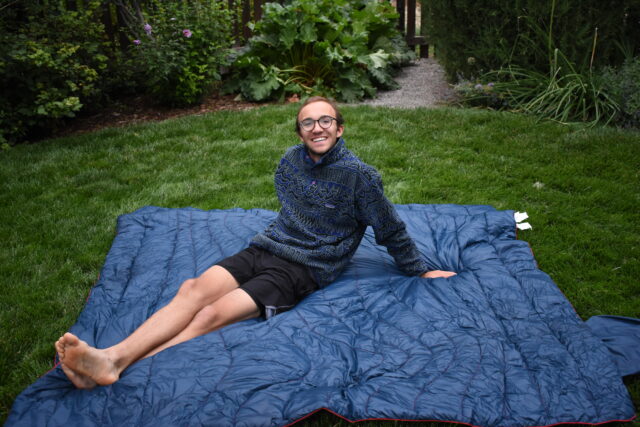
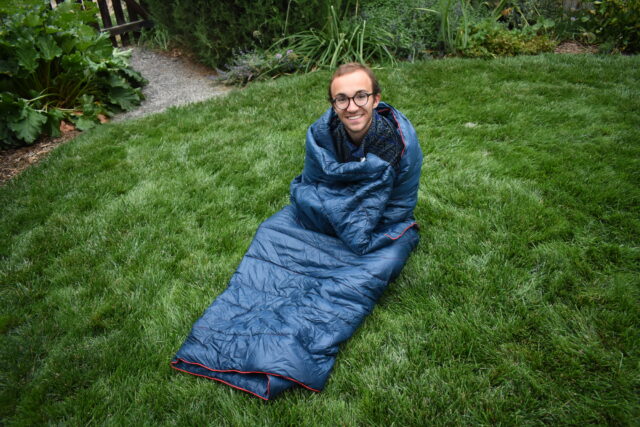
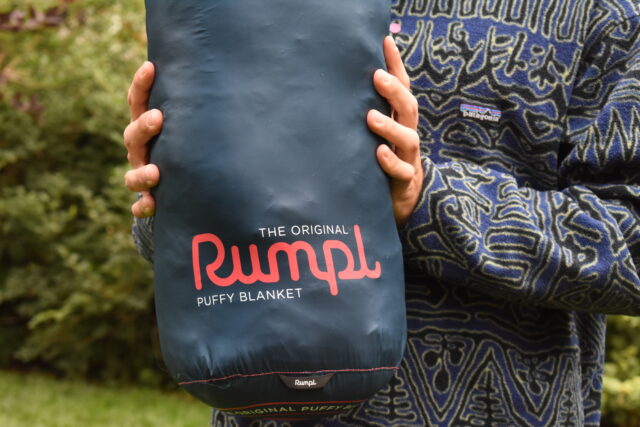
What has surprised me most about the blanket is its durability. Despite using it on rough rocks, its ripstop fabric doesn’t show the slightest sign of wear. In addition to the Rumpl’s durability, it doesn’t attract many odors when used around the campfire. When mine did finally need some TLC, washing it was a breeze. As an advocate for sustainability, I also appreciate how eco-conscious it is; Rumpl’s 2-person size blanket is reportedly made with 100 recycled plastic bottles!
While the price tag may seem a bit high, it might ease your mind to know that you likely won’t need a summer sleeping bag if you own a Rumpl. During a week-long trip across Southern Utah and Colorado in late May (when it was still quite chilly), my sleeping bag went unused. Every night I inflated my sleeping pad, tossed the Rumpl over me, and never felt too hot nor too cold as I slept. In the mornings I could easily use the Rumpl as a blanket to wrap myself up in while brewing coffee or going for an early stroll. You probably can’t do that with a sleeping bag. The Rumpl killed two birds with one stone.
Rumpl’s Original Puffy Blanket comes in 3 sizes: Junior, 1-person, and 2-person. If you plan on using your Rumpl as a sleeping bag, definitely go with the 2-person.
Beringia Cherchen Pants
MSRP: $150
Size Tested: Medium
Jed Doane: I’ve been using durable, heavier-weight hiking pants for years, generally in the form of a trusty old pair of waxed-cotton trousers. However, I’ve found myself less and less comfortable during the summer months, so this year I opted for the Cherchen Pant, Beringia’s new lightweight, breathable offering. I’ve found it to be an excellent daily driver: lightweight, versatile, and well-designed.
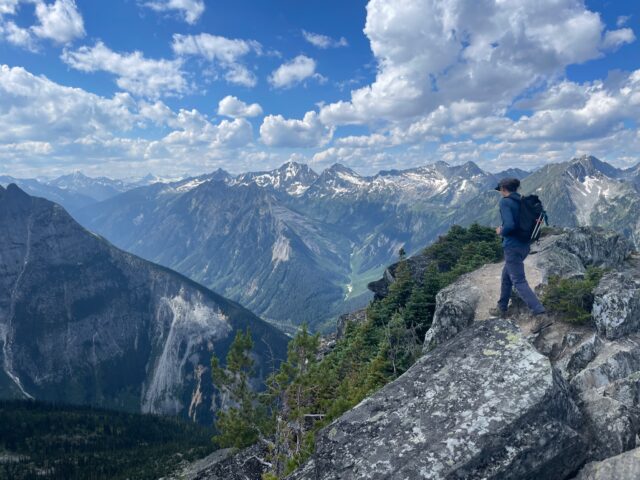
I’ve always loved Beringia’s cuts, and the Cherchen Pant is no exception. It has an athletic, tapered fit with articulated knees and a gusseted crotch, and overall moves very well. The size Medium fits my 32” waist and longer legs well. Other features include cord ankle cinches and an integrated waist belt, which works decently well (I prefer to use my own belts, but admittedly have forgotten one on a few trips and have ended up in trouble). The Phantom Blue colorway that I tested was versatile enough for the bar; the style doesn’t scream “technical pant” by any means.
The Cherchen Pant has two standard hand pockets, a right thigh pocket, and a right back pocket. Thigh pockets are generally a pet peeve of mine; often the placement won’t permit comfortable walking when filled, and they tend to sag, especially when made from lightweight fabrics. The thigh pocket is one of the best I’ve used; it’s snug, high enough above the knee, and I find myself actually using it, usually for my phone. I also appreciated the single back pocket, which was easy to slip a phone in and out of.
The stretch of the Cordura blend fabric is breathable and comfortable. I wore the Cherchen for a week-long hiking trip to the Canadian Rockies in the hottest weather of the season and was relatively comfortable in hot conditions while also protected from brush and dust. While the pant’s fabric is lightweight, it’s been more durable than the fabrics of some of the other ultralight hiking pants that I’ve worn and done a good job fending off scrapes, spills, and brush. It also dries incredibly fast, as advertised.
Overall, the Cherchen Pant is a great lightweight daily-driver option and has become my go-to for summer hiking pants.
Jank Components Beer Cage
MSRP: $35
David Golay: My personal Nicolai G1 is great, but it doesn’t have room for a water bottle cage due to the shock layout, and that’s a bummer. But what it does have room for — just barely — is a Jank Components Beer Holder. And that’s maybe even better.
The Beer Holder is just what it sounds like — a bottle cage, but for beer (or soda, I guess). The version I’ve been using holds standard 12 oz cans, but Jank offers another version for the slim hard seltzer-style cans, and I’m told a version for 16 oz tallboys is in the works. As with most of Jank’s products, it’s 3D printed in Bellingham, Washington (check out Ep.126 of Bikes & Big Ideas for more on the company) and uses an o-ring with a little cam clasp to hold your beverage of choice securely.
In the case of my G1, getting it mounted required making a little bracket that ties into the cable routing bosses (since the frame doesn’t have bottle cage mounts), but it’ll bolt right up to most bikes. The cosmetic finish is a little rough (as you’d expect for a 3D printed part without any real post-print finishing work) but it does the job nicely, and I’m just jazzed to be able to mount a beverage on my bike now.
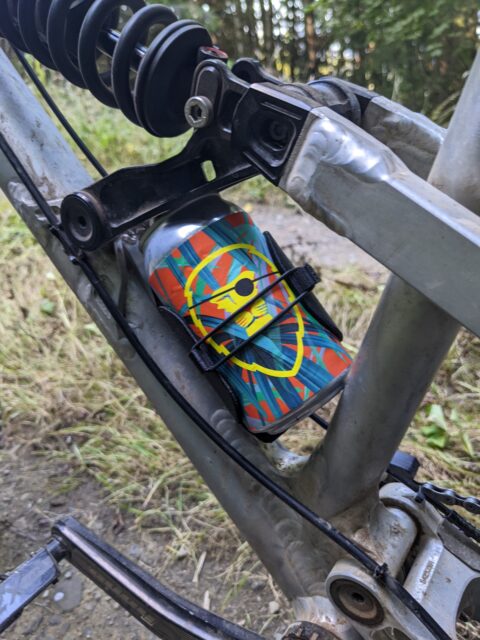

Namuk Eon Backpack 14L
MSRP: $129
Kristin: My 4-year-old son has been using the Deuter Kikki children’s backpack as his daycare backpack for the past two years. The pack is adorable and he loves it, but it is tiny (8L) and doesn’t fit everything he needs for a day away from home.
More often than not, we end up attaching his lunch box to the outside of the pack because there’s no room for it inside. The Namuk Eon Backpack, on the other hand, easily fits everything. It has a 14L capacity and isn’t too bulky when fully stuffed. And the pack’s rolltop main compartment and external cinch allows its volume to expand or shrink depending on how much my son needs to carry.
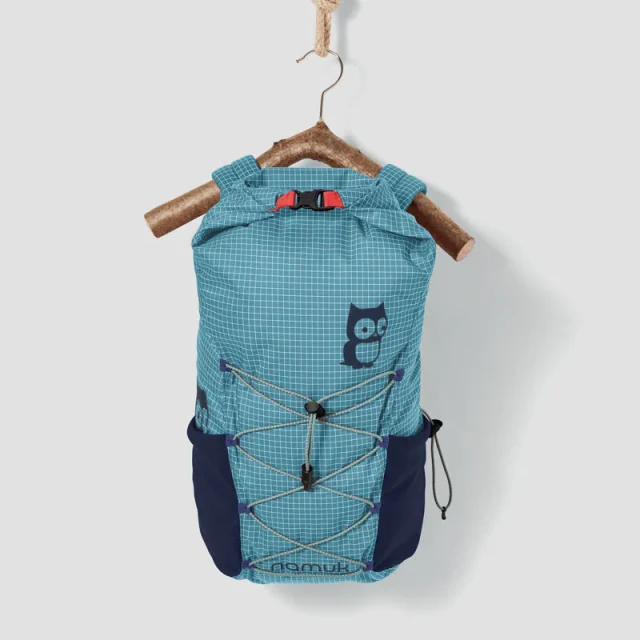
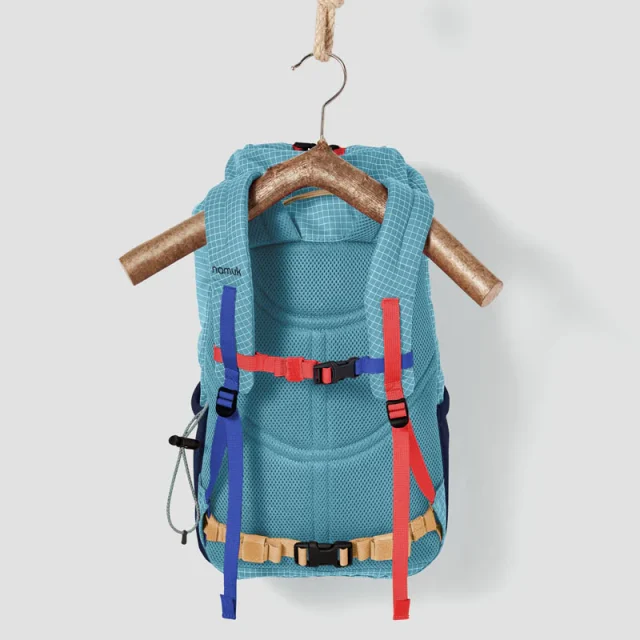
With features like an external cinch, deep side pockets, color-coded straps with removable waist straps, and a pullout lining, the Eon is thoughtfully designed. As someone who hates it when the insides of backpacks are filthy and need cleaning, I really appreciate how easy it is to pull out the Eon’s lining and wipe it down. On a recent extended trip away from home, we brought the Eon along with us and used it to take my son’s gear to summer camp. His lunchbox, change of clothes, rain jacket, sunscreen, hat, water bottle, etc. all fit inside nicely. And when we went to a local amusement park recently, we ended up using the Eon to carry everything we needed for a day away from home, including a change of clothes for my son, a bathing suit, water shoes, a towel, snacks, and multiple water bottles and hats.
If you’re looking to upgrade your kid’s backpack to something that will endure several school years (did I mention that the fabric is abrasion resistant and waterproof?), the Eon should be on your radar. The Eon isn’t cheap though, but I have no doubt that we’ll be using it for many years to come.
Dryrobe Organic Towel Dryrobe
MSRP: $70 (adult) & $55 (kids)
Kristin: When I first came across the Organic Towel dryrobe in early spring, I dismissed it as something I would never use. But when I started thinking about my summer plans, specifically the month I would be spending in New England swimming and boating as much as possible, I reconsidered. I’m glad I did.
The Towel dryrobe was designed by Gideon Bright, a surfer in the UK, or perhaps more accurately, it was refined by Gideon. His mom actually came up with the concept. The Towel dryrobe acts as a towel to keep you warm after you leave the water and allows you to remove your wetsuit discreetly. I haven’t tested the Towel dryrobe while wearing a wetsuit, but I have put it on to change out of my swimsuit and into casual clothes. The Towel dryrobe is roomy, and it makes changing easy. It’s also extremely cozy to throw on after an early(ish) morning waterski session or after a late summer swim.

The Towel dryrobe is available for both kids and adults. The adult version comes in a size Medium and Large. I could easily wear either size but opted for a Medium, which provides good coverage without being excessively large. The kids version is available in two sizes, one for ages 5-9 and the other for ages 10-13. My 4-year-old son has the smaller version and it’s just barely too long for him. He could easily trip on it, especially when walking backwards, but somehow he has yet to do so. A downside to the Towel dryrobe is that it is bulky. When I pack ours in a tote, there is very little space for anything else. Also, it takes a while for them to dry, at least in humid New England. I also wish they made one in a slightly shorter size, but regardless of the large fit, my son has been wearing his Towel dryrobe happily for the last month. From evening swim lessons in a very frigid pool to post swim boat rides, my son has been getting a lot of use out of his. Personally, I love that I can just throw it over his head — no need to wrap a towel around him and tuck in the ends, only for it to unravel 10 seconds later. Needless to say, my son and I wear our Towel dryrobes as often as we can.
Strafe Ridgeline Short & Sopris Sun Hoodie
MSRP: $129 (shorts); $99 (hoodie)
Luke Koppa: As I mentioned in our recent men’s MTB Jersey Roundup, Strafe recently released their first summer-focused collection of apparel. I’ve been hoping they’d do so for years now, since I’ve been a big fan of several of their snowsports pieces and they’ve got plenty of folks on their staff who are big into running, biking, and all the other stuff you can do in the mountains when they aren’t covered in snow. (Related note: Strafe co-founder, John Gaston, just got 2nd place at the 2022 Leadville Trail 100 MTB.)
As you’d expect if you’re familiar with their approach to snowsports apparel, Strafe’s summer pieces focus on breathability / comfort while moving in the heat and feature pretty clean, simple aesthetics. They’re all supposed to be versatile across a variety of summer activities, and I’ve been using their Skyline Tee, Sopris Sun Hoodie, and Ridgeline Short for everything from biking to fishing to running errands in town. (See that jersey roundup for more on the Skyline Tee)
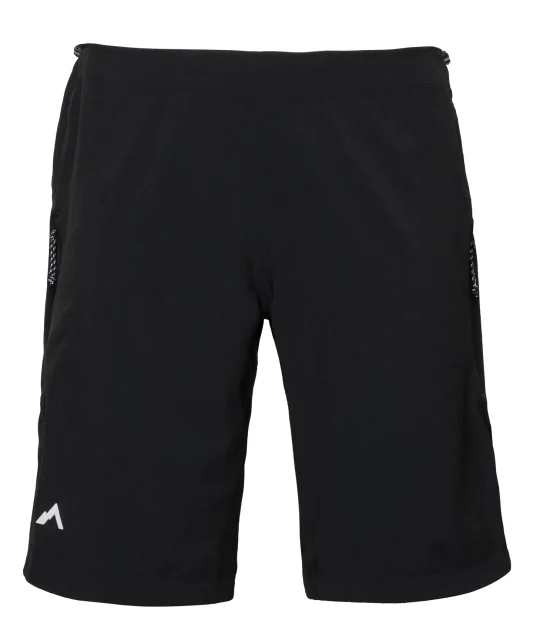
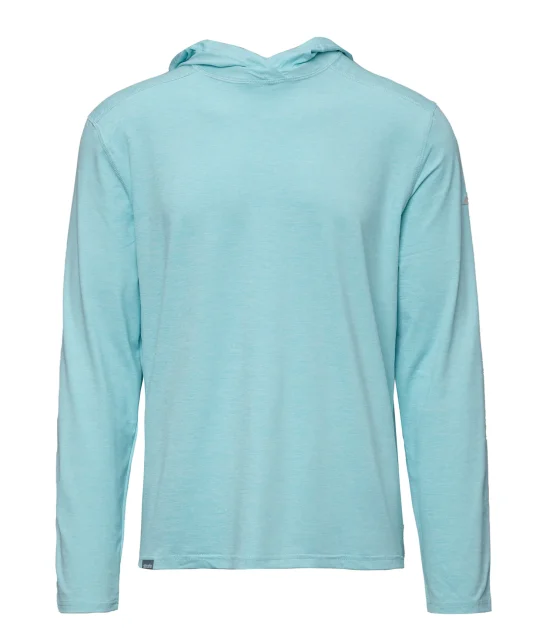
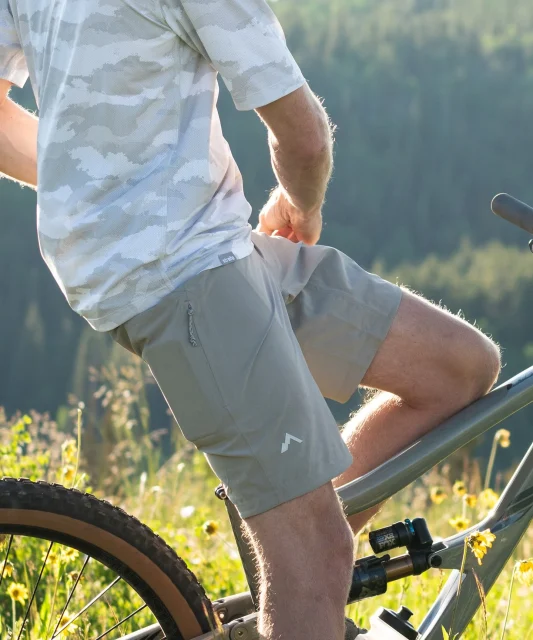
The throughline across the collection is the use of “brrr°” fibers; I’d actually never heard of the brand, but in short, brrr’s fibers are designed to be cooler to the touch, wick moisture faster, and dry more quickly than traditional nylon and polyester fibers. Brr has some lab testing data on their site that backs up these claims (though it doesn’t specify the competitor brands), and in use, I think there are definitely some real-world results. All these brrr-equipped Strafe pieces do feel slightly cooler on my skin than most fabrics, and they also do a very good job of moving moisture from my body into the air.
The Ridgeline Short feels like a mix between trail running and mountain biking shorts. Its fabric is quite light, stretchy, and breathable, feeling more reminiscent of trail running shorts than most MTB baggies. Consequently, it’s become my go-to bike short for hot trail rides, beating my previous favorite for that application, the Velocio Trail Short, because the Ridgeline feels cooler and airier. The Ridgeline has a small zippered pocket on the side of each thigh, which fit my iPhone 12, but it definitely bounces around more than in shorts with stiffer, burlier fabrics. I’m a huge fan of the Ridgeline’s simple waist adjusters, which are really minimal but hold tension while being easy to adjust on the go; I have the short in my usual size of Medium, which feels true to size, but I’ll snug down the adjusters if I’ve got my phone in the short’s pocket. The Ridgeline doesn’t have a fly, but bathroom breaks are easy due to its stretchy fabric, and I appreciate the bit of added ventilation from the stretch-mesh panel on the back of the waistband.
The one potential downside of the Ridgeline’s multi-sport intentions is that its 10.5-inch inseam leaves a gap between the top of some knee pads and the short’s hem while pedaling. I can’t comfortably pedal with knee pads on my knees anyway, but the Ridgeline does look and feel more like an XC or Trail-oriented baggy short, rather than an Enduro / DH one. The upside is that I’ve been happily wearing the Ridgeline even when biking isn’t on the menu for the day; I much prefer its just-above-the-knee length from an aesthetic perspective, and it’s also just absurdly comfortable. I’d also run in it, though some may prefer a shorter inseam for that (my solution is to just roll the waistband once or twice).
As for the Sopris Sun Hoodie, it also features the cool hand feel, quick-wicking, and fast-drying attributes of Strafe’s other brrr° pieces, but in a much more casual silhouette. I use sun hoodies all the time, particularly when fishing and camping, and the Sopris has become one of my go-to picks for hot days. It’s not quite as breezy as some of my most breathable sun hoodies, since the Sopris’ fabric is a fairly tight knit, but between its wicking and slightly cool-to-the-touch feel, I’ve still been reaching for the Sopris on the warmest days in the Crested Butte valley. I also appreciate that, unlike my slightly more breathable merino sun hoodies, the Sopris is much quicker to dry after a dip in the water. Relative to the Ridgeline Short and Skyline Tee, both of which feature fairly average, if not slightly slim fits, the Sopris is more on the relaxed end of the spectrum, which I appreciate in a sun hoodie since it equates to less fabric always touching my skin.
All in all, I think Strafe’s summer capsule collection is a really compelling execution of warm-weather active apparel for a variety of activities, and I can’t wait to see what they come up with in future collections.
OutdoorVitals Ventus Active Hoodie – Women’s
MSRP: $180
Size Tested: Medium
Kara Williard: I love a lightweight, packable insulated jacket, especially as we start to edge into brisk temperatures once again. As summer winds down, the Ventus Active Hoodie has proven to be a useful and versatile option, one that’s easy to justify bringing on longer rides, for overnight adventures, or on hikes as a backup layer.
As far as insulating midlayers go, the Ventus Active Hoodie is a step above in terms of how lightweight and packable it is considering the impressive level of warmth it offers. It has a measured weight of 205 g, which is a fraction of the weight compared to several other midlayers I have. It also packs down quite small (around the size of a softball), and is one of the few insulated layers I can fit in my Cotopaxi 3L Hip Pack.
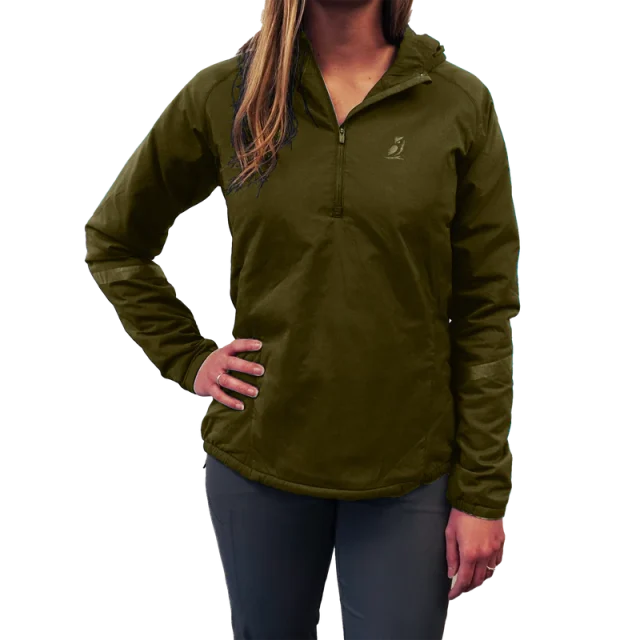
I have found the Ventus Active Hoodie to be one of the better options for when I need something breathable but the temperatures are cold enough to justify some extra insulation. It also serves as a good emergency layer to carry since it doesn’t take up much space. OutdoorVitals uses their “3DeFX Insulation” with ripstop Nylon fabric. The insulation material is coiled, which OutdoorVitals states will expand to help with breathability. Overall, I can vouch that the Ventus Active Hoodie is both breathable and quite durable. The other day, I accidentally wore mine into my chicken coop, and when it snagged on a fence wire, its fabric remained intact.
Better yet, the Ventus Active Hoodie’s material is stretchy, easy to move in, and provides good ventilation, particularly under the arms. It’s a ¾ zip, so unzipping at the neck is another way to further enhance breathability. My size Medium is comfortable, even with a thicker jersey or baselayer on underneath, and I find the length in the torso and the arms to fit just right. Since it’s also a pullover, it’s pretty easy to take on and off, and doesn’t feel restrictive when pulled over my head, which is definitely a pet peeve of mine with pullovers.
Overall, this has been one of the only insulating jackets that I can tolerate wearing while being active; it’s breathable, yet still provides a little extra warmth in a way that allows me to easily regulate my body temperature while exercising. For those looking for an ultralight jacket to throw in your layering system, I would recommend checking out the OutdoorVital Ventus Active Hoodie.
Patagonia Wavefarer Boardshort
MSRP: $69
Size Tested: 31
Jed Doane: A good pair of boardshorts is essential, and in recent years I’ve been drawn to more durable, canvas-style shorts compared to the soft, ultralight style. The Wavefarer Boardshort is a staple in Patagonia’s line and definitely my go-to pair. Made from heavy 100% recycled nylon with a DWR coating, it’s a burly, hard-wearing short that I’ve been very happy with.
In practice, the Wavefarer serves as a do-everything short in warmer climes, with a well-placed, low-profile right thigh pocket that doesn’t alter walking mechanics when holding keys and/or a phone. After three years of heavy use, my pair still dries pretty quickly, though not as fast as ultralight stretch boardshorts or my Patagonia Field shorts.
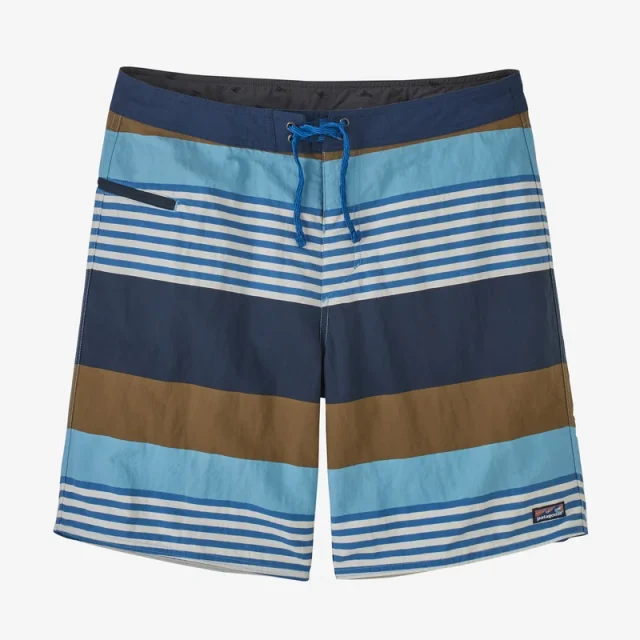
The Wavefarer’s material is definitely tough, and the DWR has held up well. The short’s tie system is durable and also works well. Some boardshorts are prone to uncomfortable bunching at the cinch that can get annoying when paddling for long periods, but the Wavefarer has proven to be comfortable all day. It also sheds surf wax after a few uses, too. I found it to run a little big — I consider myself a 32” waist and the 31” fits me perfectly. I’ve worn the Wavefarer on a surf trip to Mexico, stuffed a pair in my pack for icy lake dips in the Canadian Rockies, and have found it to be a versatile, essential piece.
Ultimate Direction Utility Belt
MSRP: $39.95
Drew Kelly: I had been chasing the idea of a no-frills post-work run all summer and had not been getting any closer… until Ultimate Direction’s Utility Belt entered my life. The goal was to attain that weightless, worry-free, no-packing-required, stress-melting jog after a day’s work, and while it is a bit ironic that a minimalist jog might require a piece of equipment, this one belt has made my runs lasting under 90 minutes much easier and enjoyable, not only from a comfort and storage perspective, but from a philosophical one as well.
The Utility Belt has limited the amount of stuff I can pack for a simple evening run, and that has made getting out the door so much easier: A 500 mL soft flask, phone, 100 calories, maybe a headlamp or light rain jacket, and I’m gone. Maybe this is my personality, but my running vest enabled me to go way overboard when it came to packing, which consequently wasted precious time as the sunlight dwindled.
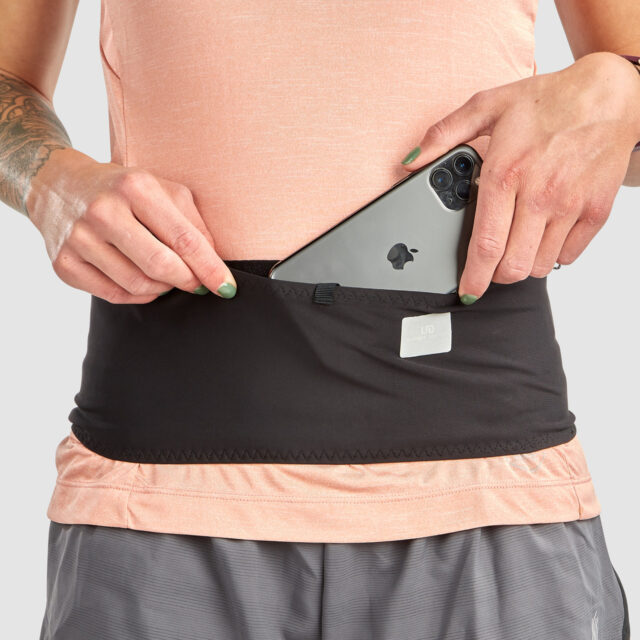
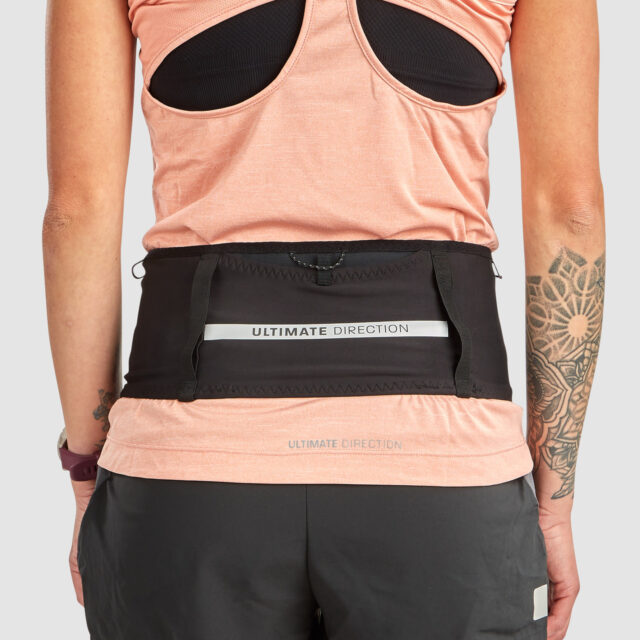
On trail, wearing this lightweight and low profile belt makes for that breezy, agile, unburdened feeling. I have tested it under and over my shirt, around my stomach and my hips, and found it pretty comfortable — actually, it went nearly unnoticed — in all scenarios. Its height and stretch disperse the belt’s tension well and keep it in place. And though the size Medium (29-32 inch waist) initially felt quite tight, I suspect going up to a size Large might make the belt slide up or down while running and allow for more bounce when fully packed. Unfortunately, the belt’s fit is not adjustable.
Beyond the Utility Belt’s comfort, the storage system works pretty well, too. With 360° of elasticized pockets, removing and replacing items is much easier than many other belts or vests, which often require awkward twisting and blind groping to access something. With the Utility Belt, I was able to do everything while on the move. My only complaints so far have been that a full 500 mL soft flask has been too bulky to easily reinsert or remove and tends to slowly work its way free of the pocket once inside. I think a thinner and longer shaped bottle would likely work much better.
Because I’m pretty sensitive to cramping and don’t like my breathing to be obstructed, I was pretty skeptical of trying another waist belt in the first place; this one has worked well for me so far though. Ultimately, I think the belt’s efficacy will come down to how it fits you.
Walton Wood Farm Lip Emergency Rescue Kit
MSRP: $16
Kristin: I don’t have a favorite among the four pack of these 100% natural and cruelty-free lip balms. Each one is distinctive but not overwhelming — no heavy perfume or tints are found in these tubes.
My collection of lip balms has deteriorated over the past few years — mainly because I keep grabbing free ones at events and simultaneously losing ones that I thought were half-decent. Free lip balms certainly aren’t the highest quality, and most of the time you’re lucky if you can find out any of their ingredients. After reading about Walton Wood Farms and their commitment to organic, cruelty-free, high quality ingredients, I was excited to give their Lip Emergency Rescue Kit a try. While their products don’t have an SPF rating, they’re free of petroleum jelly, and more importantly, they feel great on my lips. If you’re looking for quality lip balms, the Lip Emergency Rescue Kit is worth a look.
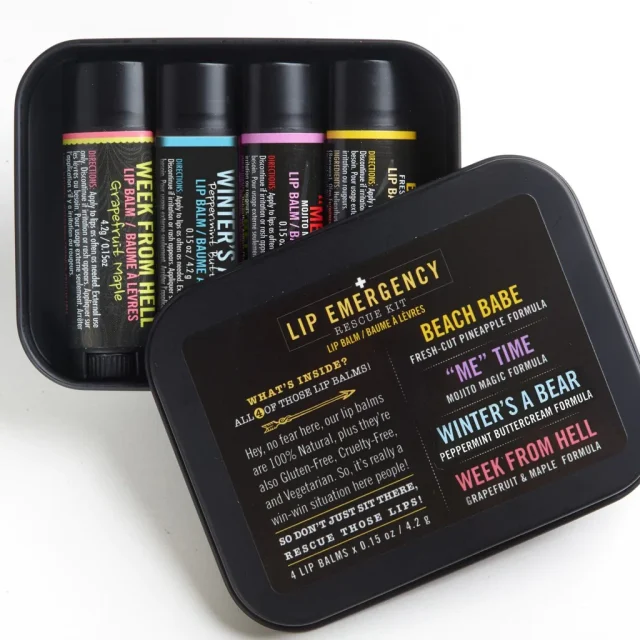
Tailwind Active Hydration
MSRP: $21 (for a pack of 12)
Matt Mitchell: Staying hydrated is something I struggle with; I sweat a ton when I run and have to force myself to drink adequate amounts of water to support my activity levels. A room temp glass of tap is about the least appealing thing to me, so in the past I’ve used electrolyte drink mixes to make plain old water more attractive. However, many of the brands I’ve sampled use artificial sweeteners like Stevia or monk fruit extract in their products, which tend to churn my stomach and leave an unpleasant chemical aftertaste in my mouth.
Tailwind Nutrition’s new Active Hydration line, which they released earlier this year (if you want the full story, check out Ep. 130 of Off The Couch), skirts digestive issues by using small amounts of natural cane sugar to flavor their drink mix instead of more processed ingredients. Each serving has only 35 calories and is loaded with collagen and Vitamin C, two supplements important for recovery between bouts of exercise that are missing from a lot of other electrolyte mixes on the market.
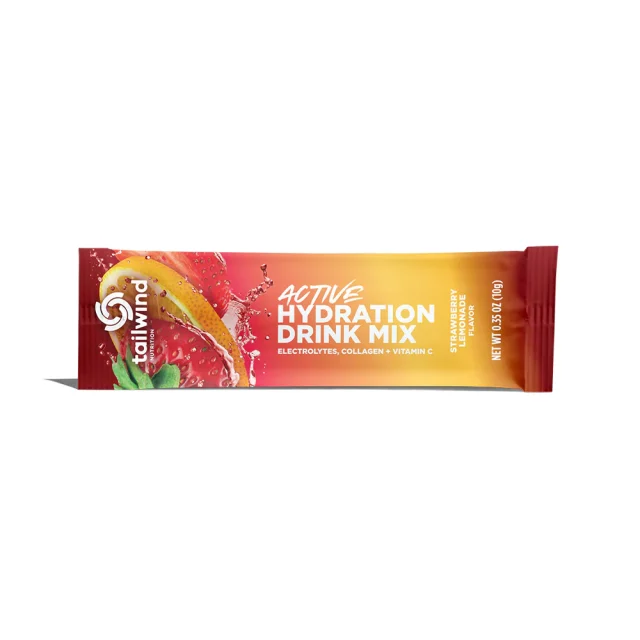
Taste-wise, I’m also a big fan. Their strawberry-lemonade flavor is a personal favorite; it’s familiar, not overly saccharine, and free from any lingering aftertaste. I’ll dissolve a packet or two of Tailwind’s Active Hydration in my enormous Nalgene when I wake up in the morning and sip on it throughout the day, both during and after exercise. My energy levels have stabilized since I made a conscious effort to drink more water, and despite needing to pee more frequently, I think I owe a lot of that to Tailwind’s Active Hydration.
Artilect Sprint Tee
MSRP: $85
Luke: We’ve used some of Artilect’s winter baselayers and have been impressed by their overall performance, and I’ve recently been using their lighter, summer-oriented Sprint Tee. The main story here is that, like most of Artilect’s layers, the Sprint uses NuYarn merino wool. I’ve only had the chance to use a few NuYarn pieces in the past, but they also happened to be some of my favorite baselayers of all time. That’s because NuYarn’s yarns provide (or even increase) many of the benefits of traditional merino wool while reducing its downsides to a very impressive degree. Namely, NuYarn is much stretchier, more durable, faster wicking, and quicker to dry than traditional wool. I also find it a bit less itchy, and it offers (in my experience) slightly more warmth when used under other layers. I was skeptical when I first heard the claims about NuYarn, but then I used a now-discontinued NuYarn baselayer set for at least 300 days of skiing before it finally tore (it had a built-in balaclava and tore where it was constantly getting pulled across my chin). The rest of that kit is still kicking, and it’s far exceeded the lifespan of any other merino wool I’ve used.
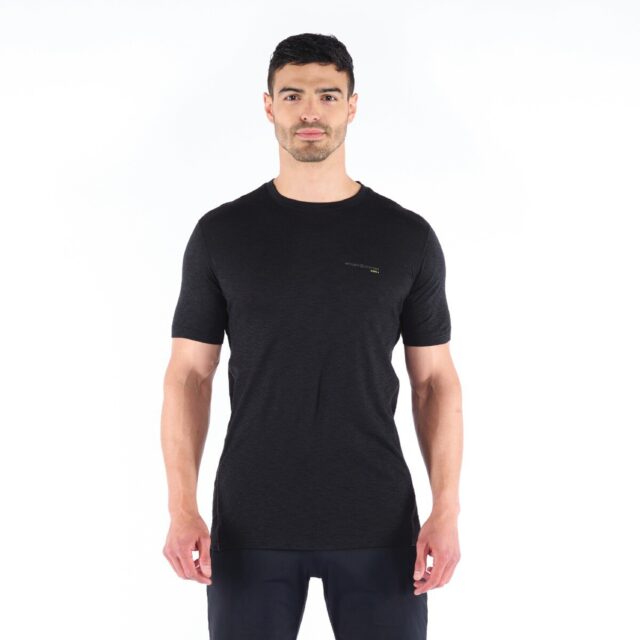
So, I’m already a big fan of NuYarn and love seeing it used more broadly across the industry (it’s also Bluesign approved). In Artilect’s Sprint Tee, the result is a very lightweight, breathable performance Tee that deals with heat and moisture really effectively, and doesn’t start to stink nearly as quickly as synthetic alternatives. Its 115 g/m2 NuYarn fabric is really light, which means I’ll happily wear it on the hottest days we get in the Crested Butte valley (a bit over 80°F / 27°C), but it’s more versatile than most ultralight tops since it offers a bit more insulation once you throw another layer over it.
It does have a slim fit, and personally, I prefer something on the looser side of things. But that’s totally subjective, and if you like a slimmer fit (that’s still far from compression-level tightness), this is a really versatile layer that I am confident will hold up better in the long run than most other merino fabrics and have better odor resistance than most synthetic ones.
Arcade Vapor Belt
MSRP: $32
David: We’ve covered the excellence of Arcade belts a bunch, and their Vapor belt essentially just incorporates the good stuff about their other versions into a package with a different aesthetic, which I think looks pretty sharp.
If you’re not familiar with Arcade belts, their main selling points are their stretchiness for better comfort on the move, their super low-profile buckles that won’t interfere with hip belts on packs or other gear, and how well they hold their fit. I’ve used a few of their other models a lot over the years and the Vapor still does all that cool stuff while looking a bit more interesting / less minimalist. It’s comfortable, holds my pants up effectively, looks good, and doesn’t cost a ton. And if that’s not enough, the webbing is made from 85% recycled materials, too.
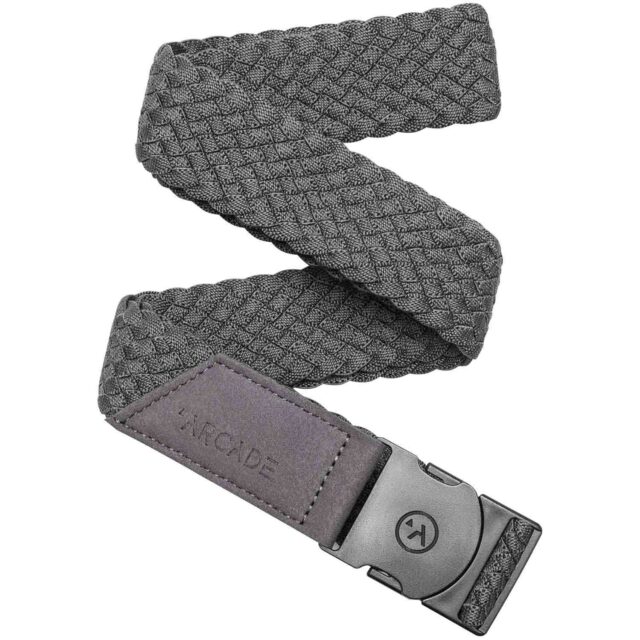
Wolf Tooth B-RAD Mounting Bases (& Strap)
MSRP: $9.95–$24.95 (plates); $29.95 (Medium Strap)
Luke: My personal bike is a size Medium Commencal Meta TR 29, and while it can fit a 21-oz water bottle (Camelbak Dirt 21) inside the front triangle, it’s a very tight fit. Like, to the point where I have to put some tape over my shock’s piggyback reservoir to keep it from getting lightly scratched by the bottle’s cap.
This always bugged me, since Commencal could’ve put the bottle bosses at least a few centimeters lower on the downtube, but fortunately, Wolf Tooth’s B-RAD mounting base system allows for a workaround. Available in a few different sizes, they’re basically just aluminum plates / brackets that allow you to shift the bottle mounting positions, and/or add additional mounting spots.
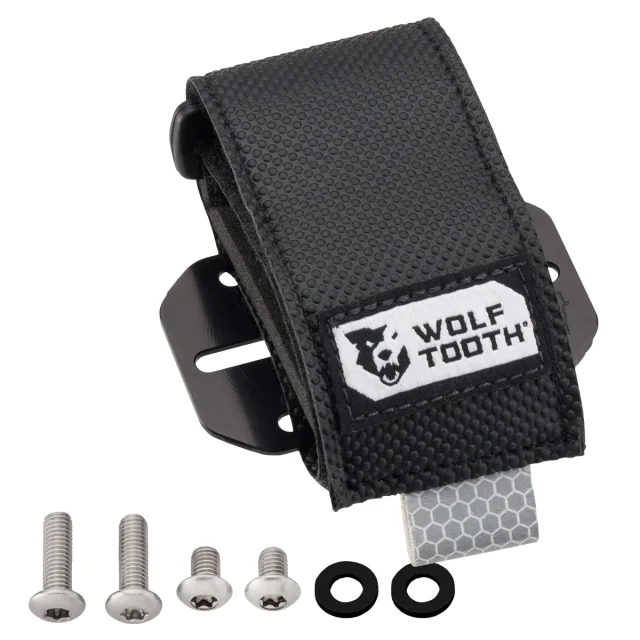
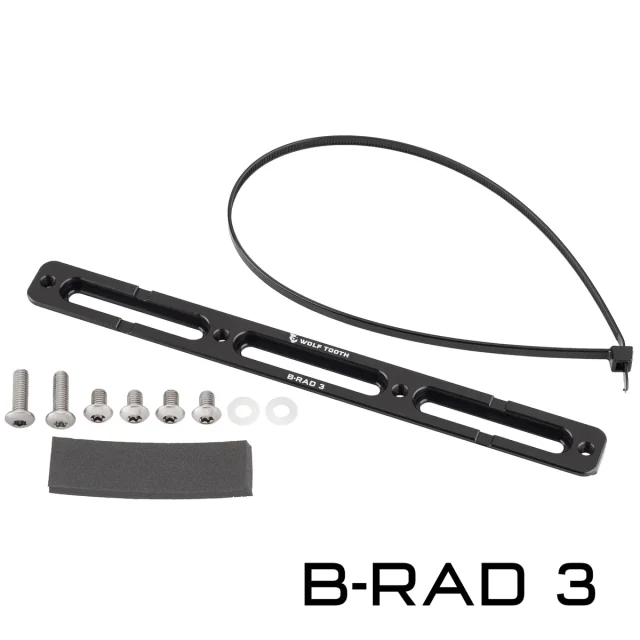
For my bike, I needed to both move the bottle cage lower and add an additional mounting spot for my pump (OneUp EDC 100cc) since mounting it under the cage would push the bottle too close to the shock, so I opted for the 3-slot B-RAD plate. And, well, it does its job. I spent a good bit of time figuring out the optimal position, but I now have a bottle that doesn’t contact my shock and a pump that’s securely attached to my bike without getting in the way of my bottle or knees.
The 3-slot and 4-slot versions include zip ties for snugging down the plate where it extends away from the frames bosses, and with that cinched down, I don’t notice any movement in the system (and it’s totally silent in my experience). The 2-slot version would be sweet if you just want to move a single mount up or down, while the “Bottle Shift” option seems like it could’ve also solved my issue of trying to fit both a bottle and a pump into a tight-clearance frame from a single pair of the frame’s original bosses.
I also got Wolf Tooth’s B-RAD Medium Strap & Accessory Mount, thinking I might be able to attach it to the 3-slot plate; the Meta only has one set of bottle bosses, which is another thing I think is kinda dumb, since they definitely could’ve added a pair under the top tube. Anyway, I still didn’t have the frame clearance with the 3-plate to use the accessory mount, which is a metal plate that mounts to bottle bosses, with slots to run a strap through. But I am using the strap itself, and it’s pretty nice. It features a foam pad to decrease pressure on the bike’s frame, and its 50mm-wide profile does a better job of distributing even pressure over tubes, CO2 cartridges, tire levers, etc. than thinner alternatives, like a Voile strap.
I’m now pretty psyched with my on-frame storage setup, especially given that the Meta frame isn’t all that conducive to maximizing the stuff you can attach to it. I rarely go on rides longer than ~3 hours, and as a result, I can now avoid wearing any sort of pack for nearly all my rides where I’m not also hauling a camera. The OneUp EDC pump + EDC V2 tool inside handle maintenance duties, I’ve got a tube + levers securely strapped to my top tube, and a water bottle that’s safely away from my shock. If you’ve got a bike with limited on-frame storage and/or you’re just looking to minimize the number of things you need to carry on your person, I highly recommend checking out Wolf Tooth’s B-RAD system.
Smartwool Men’s Tank
MSRP: $50 (currently on sale for $32.50)
David: I picked up two of the Smartwool Men’s Tank early this summer on the recommendation of a friend and they’ve quickly become my go-to shirt for hot summer days, both on and off the bike. I’m a big fan of wool bike jerseys for their odor resistance and how they tend not to feel too clammy when wet and sweaty. The Smartwool Tank is essentially just a typical 150 weight wool / polyester blend fabric in tanktop form, and it’s great.
As per usual for wool garments, the Smartwool Tank isn’t the absolute softest thing out there (that’s fairly typical for a 56% wool blend) and it does soak up a fair bit of water / sweat. However, it’s cool and comfortable, and I’m happy to make those tradeoffs for something I’m going to sweat in a lot while riding bikes in hot weather. I’ve also frequently been wearing the Smartwool Tank in casual settings, and it looks and feels good there, too.
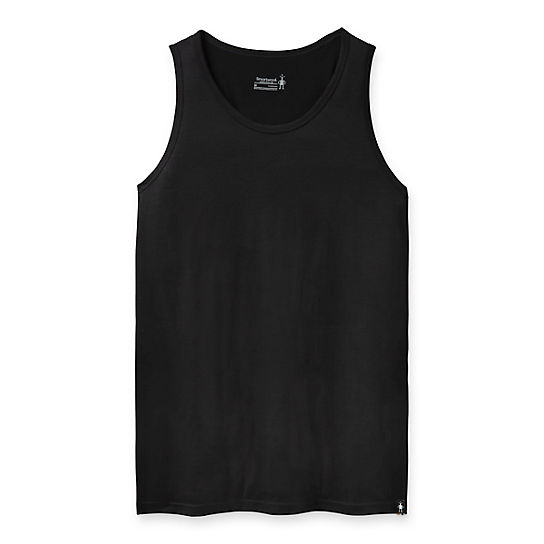
Astral PFD Sandal M’s
MSRP: $125
Size Tested: US 10
Dylan Wood: Astral is a well-known producer of shoes and personal flotation devices (PFDs) in the whitewater world, and their PFD Sandal is a new addition to their extensive line of water-oriented footwear. Astral says that this shoe is inspired by their secure-fitting PFDs, hence the (slightly confusing) name. I’ve been fortunate to spend a lot of time on a raft and in a kayak on various stretches of whitewater rivers, and I recently brought the PFD Sandal along for a trip down the Green River from the Gates of Lodore to Split Mountain. I’ve used various sandals in the past, like Keens and Chacos, so I was curious to see how the PFD Sandal would compare to those models.
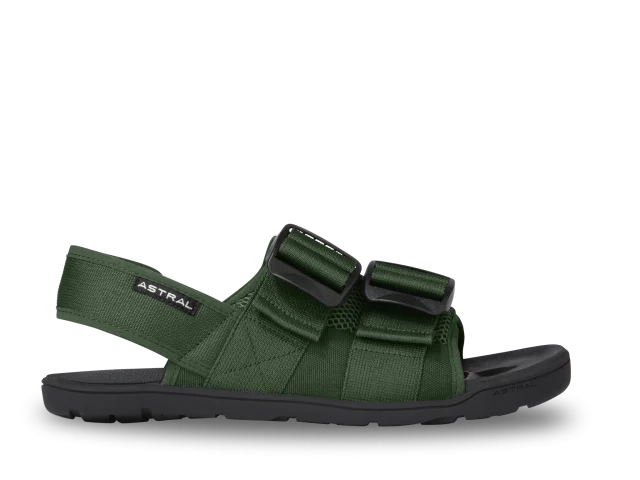
Well, I’m impressed. First of all, the PFD Sandal is very adjustable; I found it easy to make fit securely on my feet. It has two independent straps over the top of the foot as well as a heel strap with two different anchor points. You can really crank this shoe down onto your foot if you’d like, as the two main straps have a nice, soft mesh pad under them that prevents the straps from digging into the tops of your feet. But that’s probably not necessary — the PFD Sandal stays on nicely so long as you have the heel strap anchored down. I also found this shoe easier to take on and off with one hand than Chacos, which often require two hands to sort out, in my experience.
This sandal is also notably lighter and lower-profile than several options out there (e.g. Chacos). They have a zero-drop footbed and thin soles, so while they aren’t as cushy as thicker options, they’re less cumbersome, less susceptible to cause ankle rolls, and noticeably lighter when walking and scrambling around. These shoes also provide superb grip — between walking around on wet rafts and scrambling on dry cliffs, I never felt their traction slip.
I will say that these shoes keep debris out nicely, but it is difficult to impossible to get sand out once it’s made its way in. While I found them better at preventing hotspots and blisters in very sandy conditions than Chacos, it’s still important to try and keep sand out and to pay attention to how tight the straps are.
So, if you’re looking for a new water sandal, definitely consider the Astral PFD — it’s notably lighter, more secure, and grippier than most options out there.
Wolf Tooth 8-Bit Tire Lever + Rim Dent Remover Multi-Tool
MSRP: $19.95
Luke: $20 is a whole lot for a single tire lever, and while I haven’t yet bought one for myself, I instantly became a fan of this one when my buddy let me borrow his. Wolf Tooth’s “8-Bit” system encompasses a variety of tools and tire levers that stack together, and you can purchase combo packs or just the ones you want.
As you probably guessed by its very informative name, this part of the system is basically just a (really nice) tire lever, with the added benefit of having a slot on the other end for prying out dents in aluminum MTB rims (not aero or deep-dish rims). As a tire lever, it’s really sweet, with a long, solid aluminum core that’s covered with a nylon composite on the tire-lever end for a softer handfeel that’s also less likely to dent / scratch your rim.
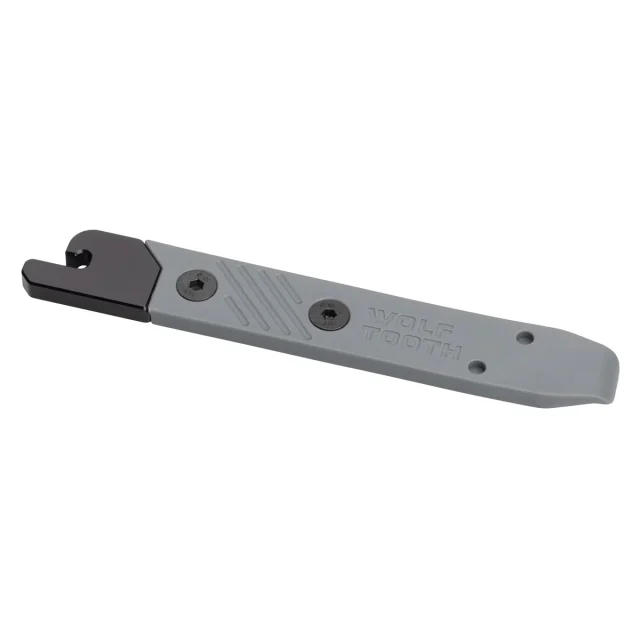
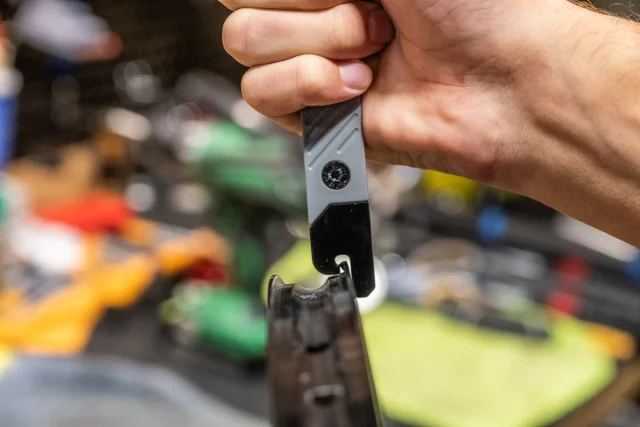
As a rim-dent-removal tool, it has also worked remarkably well so far. My buddy from whom I borrowed it is a notorious wheel-destroyer, and he’s managed to massage his mangled rims back into shape multiple times with it. In my case, I put a noticeable dent in my rear rim the very first day I got my bike (and two days before my tire insert for said rim arrived; thanks, shipping delays…). Anyway, that rim stayed functional, in that it would hold air for a ride, but I always had to top up after about 24 hours. Since I’m lazy, I just dealt with that. But after 60 seconds of (somewhat) careful prying with the 8-Bit Tire Lever, I had a much nicer-looking rim. Following adding a bit more sealant and pumping it full of air, that rim is now maintaining consistent pressure for a week+. Pretty sweet.
Whenever I break or lose my current plastic tire levers, I’ll be purchasing one or two of these for myself. Wolf Tooth also makes a version of this tire lever that, instead of the rim-dent remover, features a rotor-truing slot and 8-mm flare wrench for adjusting the compression nut on hydraulic brakes.
[I wrote this about a week ago, and of course, yesterday I put another dent in the rim, so it looks like I’ll be borrowing it once again…]
Leatt MTB X-Flow 2.0 Glove
MSRP: $35
David: I admittedly like riding gloveless when I can get away with it, but there are times when it’s either too cold, too wet, or it’s hot and my hands are too sweaty. If I have to resort to wearing gloves, I want something minimalist, with a thin palm, no padding, and a slip-on fit with no velcro wrist closure.
So long as it’s not too cold out, my personal go-to has long been the Troy Lee Ace 2.0, but I’ve been using the Leatt MTB X-Flow 2.0 a bunch recently and they’ve got some compelling advantages. For one (at least on my hands), the fit is a bit better — I have to wear the Ace 2.0 in an XXL to get the length I need in the fingers, but that size is a little loose through the palm, and the thumb is a touch longer than it really needs to be. A size XL in the Leatt fits me perfectly. Obviously your mileage may vary, but if you’re after a relatively slim fitting glove, these should be on your radar.
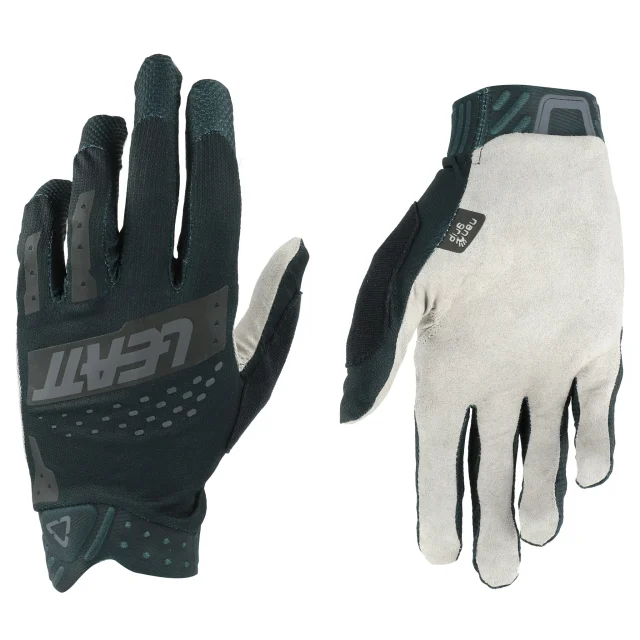
I’d also add that the palm material Leatt uses is outstanding. They call it “NanoGrip” and it’s reminiscent of a thinner, scaled-down version of the plush from snowsports climbing skins, but with less aligned fibers so that they grip in more than one direction. It’s super, super grippy and feels outstanding.
The one area where the Ace 2.0 still has a clear advantage is in ventilation — they’re significantly cooler than the Leatt gloves. But between the fit and grip, I’m a very big fan of the Leatt MTB X-Flow 2.0; I expect that I’ll be even more jazzed about them when the temperatures start to cool off and their slightly reduced ventilation starts to become a benefit rather than a drawback.
OneUp EDC Pump & EDC V2 Tool
MSRP: $65 (pump); $65 (tool)
Luke: OneUp’s EDC system was one of the first to cleanly integrate useful tools into / onto your bike’s frame, and it’s gained plenty of fans since it was first introduced. You can now add me to that group.
I’ve been using the 100cc EDC Pump with the EDC V2 Tool stored inside it for several weeks, and I quickly came to love the combo because of how easy it is to use. I initially thought I’d go with one of their tool carriers that goes into the steerer tube of the bike, but my fork isn’t compatible, so I went the tool-in-pump route.
I rarely end up needing to do complex repairs on the trail (erratically knocks on wood), so the compact, 20-function EDC V2 Tool has all the bits and features I need on a regular basis, and accessing it takes all of 2 seconds by popping it out of the pump (which is bolted to my frame). I’m currently keeping a CO2 cartridge attached to the tool inside the pump, but I may swap that for the included storage capsule, in which I’d keep some tire plugs, but I’m leaning toward getting a separate plug / plugger kit and strapping it with my tube.
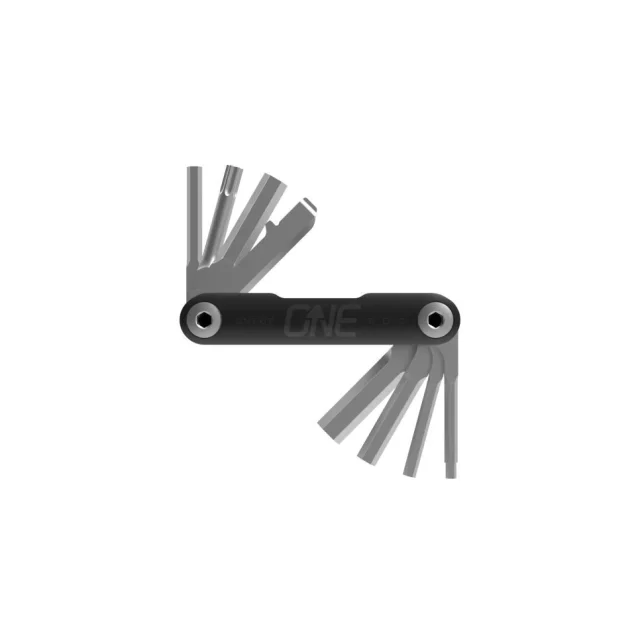
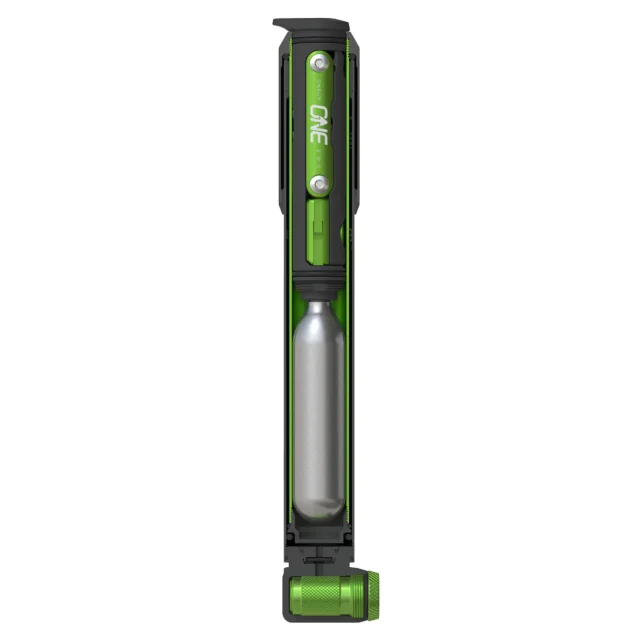
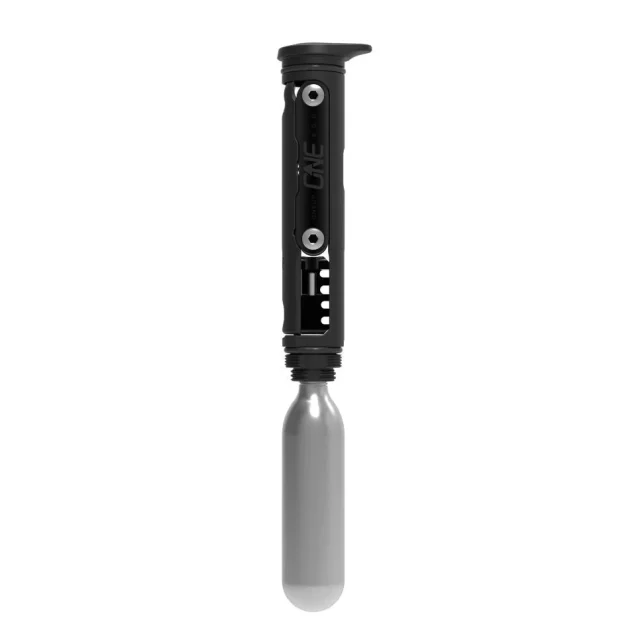
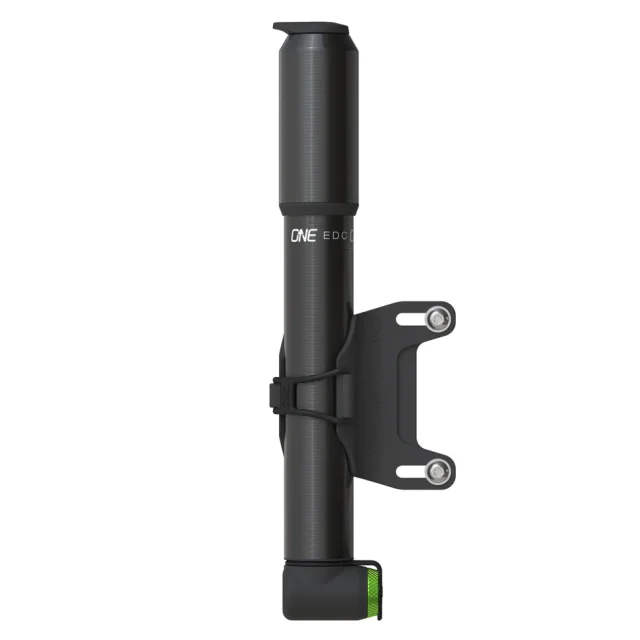
As for the pump, I love how easy and secure its push-on inflator is; I previously had a mini pump that needed to be screwed on to a valve, and I had terrible luck getting a solid seal on some valves. As a bonus, the EDC Pump’s inflator head doubles as a CO2 inflator, so I don’t need to also carry one of those with me. When hand-pumping, the 100cc EDC Pump feels as quick and ergonomic as any mini pump I’ve used (i.e., fine for what it is). Its included bottle cage mount has so far proven very secure; between me and my buddy, who’s had the same setup for years, we’ve probably ridden several thousand miles (including many in the bike park) with the EDC Pump attached to our bikes via the bottle mount with zero instances of it popping off unexpectedly. One tip: when pulling the tool out of the EDC Pump, grip the pump’s handle with your other hand, rather than just yanking on the tool. If you don’t, it can extend the pump, and then you have to pop the cover off the inflator head to re-compress the pump back to its stored size.
As someone who likes to ride with as few things as possible in my pockets or on my back, OneUp’s EDC system has been one of my all-time favorite additions to my setup.

One key feature / benefit of Arcade belts not mentioned here — really, my top priority feature, and I own a bunch of them; they’re styley, low-profile, stretchy, and very functional and comfortable — is that, because there is no metal, they’re perfect for traveling through airports. You never have to take them off when going through airport security.
Right on.. I just used the Beringia Cherchen pant on a 60 day EU trip that included hike, bike, cities and a few long days of travel. I found the lightweight breathable stretch fabric is an eye-opener for such multi day, multi sport trips and still looks presentable when not in the mountains.